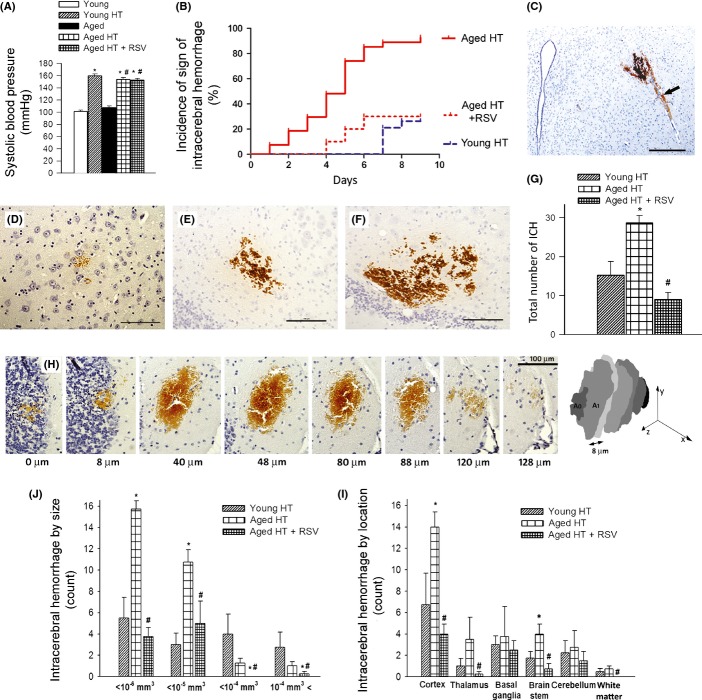Fig 1.
Aging exacerbates hypertension (HT)-induced spontaneous cerebral microhemorrhages (CMHs) in mice: prevention by resveratrol treatment. Shown are (A) the effect of treatment with angiotensin II plus L-NAME (HT groups) on systolic blood pressure and (B) the incidence of neurological signs of intracerebral hemorrhage in young (3 months, n = 20), aged (24 months, n = 20), and resveratrol-treated aged (n = 20) C57BL/6 mice. Data are mean ± SEM (n = 20 for each group). *P < 0.05 vs. Young, #P < 0.05 vs. Aged. (C): Representative image of a CMH stained by diaminobenzidine (scale bar = 200 μm). Black arrow points to a cerebral intraparenchymal arteriole in close proximity to the hemorrhage. (D–F): Representative images of patchy CMHs of different sizes (scale bar = 100 μm). (G): Total number of CMHs throughout the entire brain of young, aged, and resveratrol-treated aged mice. Data are mean ± SEM. *P < 0.05 vs. Young, #P < 0.05 vs. Aged (n = 20 in each group). Panel H illustrates the reconstruction of the volume of a confluent CMH (see Methods). (I): The distribution of CMHs by size and by location (J) in each experimental group. Note that aging increases the number of small CMHs predominantly in the cortex and brain stem, whereas resveratrol treatment in aged mice significantly reduces CMH incidence. Data are mean ± SEM. *P < 0.05 vs. Young, #P < 0.05 vs. Aged (n = 20 in each group).

